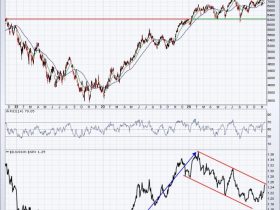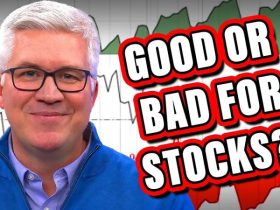Trading gaps up and down after earnings reports can present lucrative opportunities for traders looking to capitalize on market volatility and price movements. To successfully navigate these opportunities, traders must employ strategic approaches that account for the inherent risks and potential rewards associated with trading earnings gaps.
Understanding the Nature of Gaps
Gaps occur when a stock opens significantly higher or lower than its previous closing price. Earnings gaps, in particular, are driven by the market’s reaction to a company’s earnings report, which can lead to massive price movements. Traders must be able to differentiate between various types of gaps, such as breakaway gaps, continuation gaps, and exhaustion gaps, to make informed trading decisions.
Developing a Trading Plan
Before executing any trades based on earnings gaps, traders must formulate a detailed trading plan that outlines entry and exit points, risk management strategies, and profit-taking targets. It is crucial to conduct thorough technical and fundamental analysis to identify stocks with the highest potential for gap trading opportunities.
Risk Management and Position Sizing
Managing risk is paramount in trading earnings gaps, as price movements can be highly volatile and unpredictable. Traders should implement proper risk management techniques, such as setting stop-loss orders and avoiding overleveraging, to protect their capital and minimize potential losses. Additionally, position sizing should be carefully calculated to ensure that traders do not expose themselves to excessive risk.
Utilizing Technical Indicators
Technical analysis plays a critical role in identifying potential entry and exit points when trading earnings gaps. Traders can utilize a variety of technical indicators, such as moving averages, Bollinger Bands, and relative strength index (RSI), to confirm trading signals and evaluate the strength of price movements. Combining multiple indicators can provide a more comprehensive view of market trends and increase the probability of successful trades.
Monitoring Market Sentiment
Market sentiment surrounding a stock’s earnings report can significantly influence its price behavior and create trading opportunities. Traders should pay close attention to analyst recommendations, institutional buying or selling activity, and social media trends to gauge market sentiment and anticipate potential gaps. Keeping abreast of news and developments related to the company can also provide valuable insights for making informed trading decisions.
Executing Trades and Reviewing Performance
Once a trading plan is in place and market conditions align with the identified criteria, traders can execute their trades based on their established strategies. It is essential to closely monitor price movements and adjust trading positions as needed to adapt to changing market dynamics. After trading earnings gaps, traders should conduct a thorough review of their performance to identify strengths and weaknesses, refine their strategies, and continuously improve their trading skills.
In conclusion, trading gaps up and down after earnings reports can be a lucrative yet challenging endeavor for traders. By understanding the nature of gaps, developing a structured trading plan, managing risk effectively, utilizing technical indicators, monitoring market sentiment, and reviewing performance, traders can enhance their ability to capitalize on earnings gap trading opportunities and achieve consistent success in the markets.











